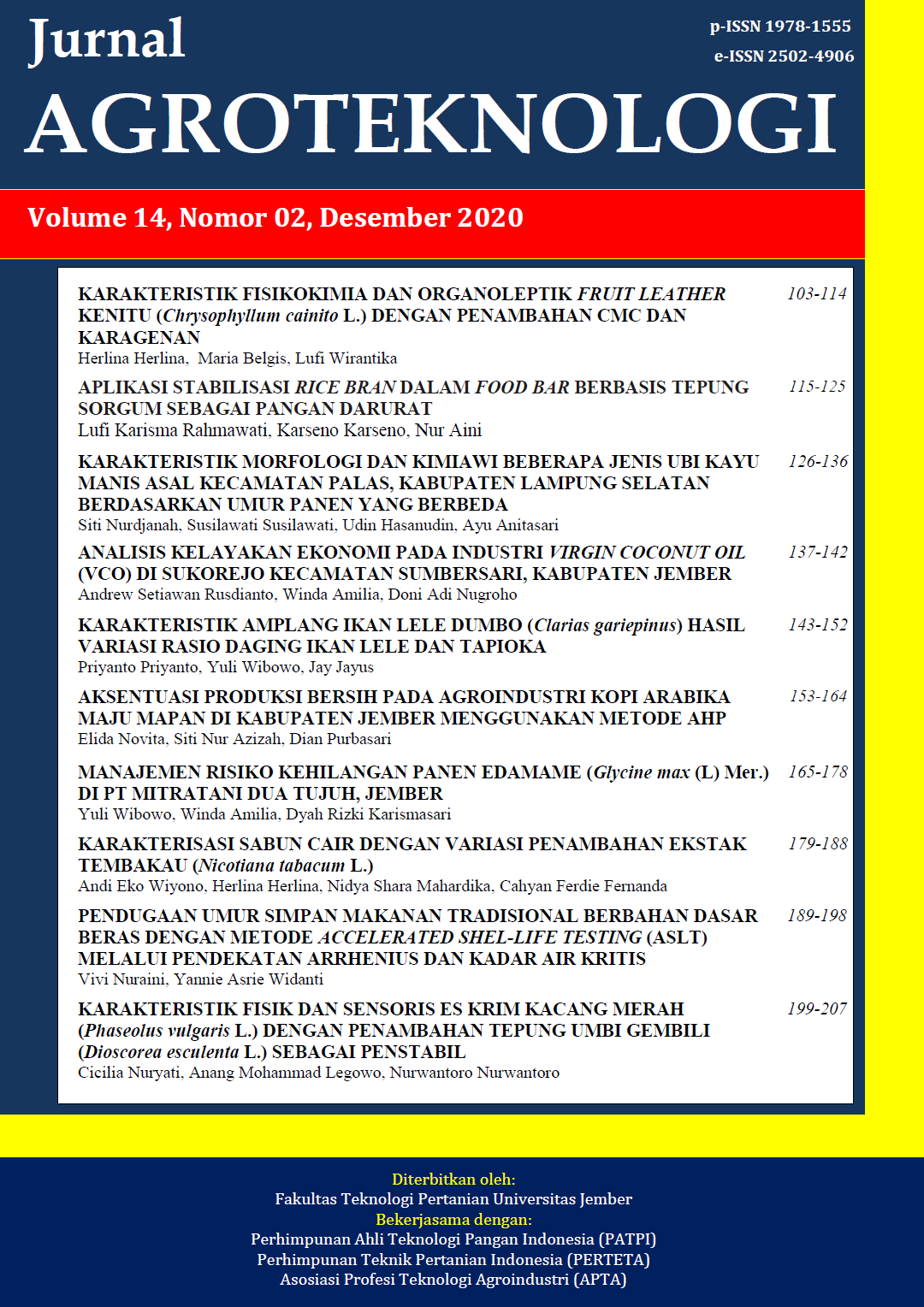AKSENTUASI PRODUKSI BERSIH PADA AGROINDUSTRI KOPI ARABIKA MAJU MAPAN DI KABUPATEN JEMBER MENGGUNAKAN METODE AHP
Abstract
Panti District is the second-largest coffee plantation in Jember Regency, with an area of 160.71 𝑘𝑚2 or 4.88% of the total area of Jember Regency with an average height of 50-1,340 meters above sea level. With this average height, one of the coffee plants planted was Arabica coffee. Based on the number of existing coffee plantations, the processing of wet coffee produced a lot of liquid and solid waste. Coffee fruit waste in the form of flesh physical composition reached 48%, consisted of 42% fruit skin and 6% seed skin. The utilization of coffee waste is still not optimal. One effort to reduce coffee waste was by applying cleaner production. The method used to determine this priority of production application at Maju Mapan Coffee Agroindustry is AHP (Analytical Hierarchy Process) method, technical feasibility, and financial feasibility analysis. From mass balance analysis, the results showed that from 1 ton of red coffee berry and 3146.63 liters of water as production input produced 40% of coffee beans, 38.4% solid waste, and 2946 liters of wastewater. The wastewater characteristics exceeded the threshold standard of wastewater quality stipulated by the Decree of the Governor of East Java Number 45 of 2002. On the other side, solid waste most unsettled the surrounding community because every day, it created a foul odor and invited many insects. Clean production priority in Maju Mapan Agroindustry using AHP, technical feasibility, and financial feasibility analysis obtained are manufacturing the cascara tea, compost block, and animal feed. AHP analysis results using the application of expert choice assessment in an alternative hierarchy of the ten experts showed that making cascara tea was chosen as the main priority in the utilization of waste from Arabica coffee processing in Maju Mapan Agroindustry.
Keywords: AHP, arabica coffee, cascara tea, cleaner production, coffee waste

This work is licensed under a Creative Commons Attribution-ShareAlike 4.0 International License.
Jurnal Agroteknologi has CC-BY-SA or an equivalent license as the optimal license for the publication, distribution, use, and reuse of scholarly work. Authors who publish with this journal retain copyright and grant the journal the right of first publication with the work simultaneously licensed under a Creative Commons Attribution-ShareAlike 4.0 International License that allows others to share the work with an acknowledgment of the work's authorship and initial publication in this journal.
 JURNAL AGROTEKNOLOGI
JURNAL AGROTEKNOLOGI 










.png)

